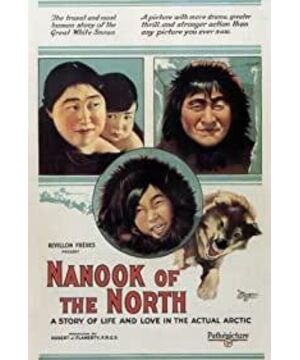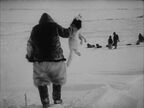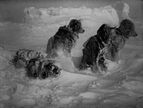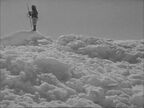This film by Robert Flaherty documents one-year life of Nanook, an Eskimo and his family. It aims to present the primitive existence of peoples' struggle of their survival in harsh condition. By simply using his camera, Flaherty truly exposed a primitive existence of society to us, which has barely contact with explorers before.
Quite different from other industrial productions, Flaherty not only brought this primitive society in a distant close to us, but also pulled up the inside spirit of its culture to the surface. And this true spirit may be the essential power of human being, how Eskimo actually fight with wild-animals for food, how they build a special three-walled igloo that there would be good enough sunlight into their house, how they kill fish for food... This whole all features how human struggles life against nature, and it all reflects on this ever-lasting spirit of life struggling.
I think this scene can mostly illustrate what I refer to – after long time of laying down ice and waiting, finally there was a fish being caught by Nanbook, then he just couldn't wait but directly bite and eat the fish for his hunger. And another one also impressed me – Mother spat into some cloth, using her own salvia wash daughter's body. Daughter's body seems much cleaner then her face. While camera focusing on her face and closing up, her eyes directly looked into the camera with a most ignorant smile. Though watching her on the screen, we can still feel her real happiness of this shower. These two images seems too literal in a documentary film, but Flaherty desired to emphasize these life details which could help abstractly present the harsh condition Eskimo survived .
In terms of camera techniques, we can learn lots of motion shooting from Flaherty's moving images. For instance, there is an unbroken shot showing that Nanbook how to catch a seal with his harpoon. Firstly, Nanook finds such a hole, barely big enough to be seen and is poised motionless above it with his harpoon until a seal rises to breathe. Then he strikes and holds onto the line as the seal plunges to escape.
In a word, this groundbreaking documentary of Nanook's life, mainly concerns the perpetual quest for food as his family teeters on starvation. In the essence, it captures the human's nature power in life surviving.
View more about Nanook of the North reviews








